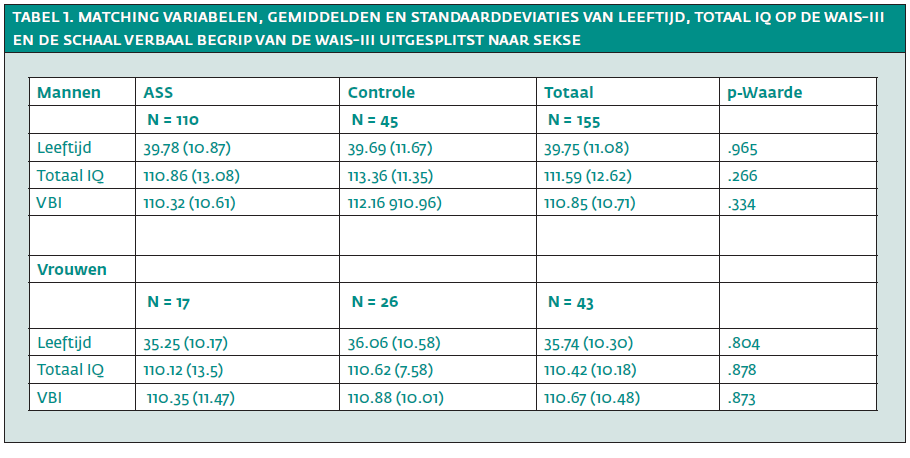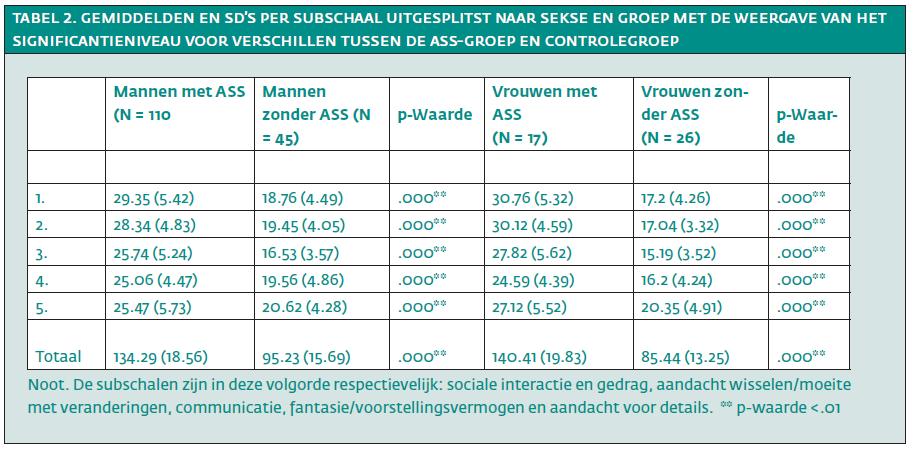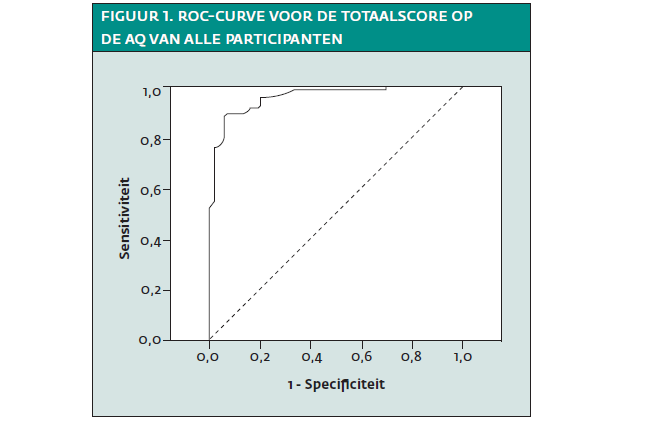Autismespectrumstoornissen (ASS) komen bij rond 1% van de bevolking voor. In studies wordt gesuggereerd dat kenmerken van ASS in de gehele populatie worden gezien en stoornissen slechts uitersten van een continuüm zijn (Baird et al., 2006; Fombonne, 2005)310. Bij volwassenen kunnen ASS lange tijd onopgemerkt blijven, bijvoorbeeld doordat beperkingen worden gecompenseerd met een hoge intelligentie (Wijngaarden- Cremers & Van der Gaag, 2009)36. Wanneer compensatiestrategieën echter tekort schieten, zijn beperkingen vaak niet langer te verbergen.
ASS kunnen pas worden gediagnosticeerd nadat in uitvoerig diagnostisch onderzoek andere ziektebeelden die kunnen lijken op ASS uitgesloten zijn, en er sprake is van voldoende kenmerken zoals beschreven door de APA (2013). Het diagnostisch onderzoek naar ASS is daardoor tijdsintensief en kostbaar (Sizoo & Horwitz, 2012)25. In de klinische praktijk zouden screeningsinstrumenten ondersteuning kunnen bieden om te bepalen of nader diagnostisch onderzoek naar ASS nodig is.
ASS screening
Onderzoek naar ASS bij volwassenen is vaak complex, bijvoorbeeld doordat compensatiemechanismen autismekenmerken




